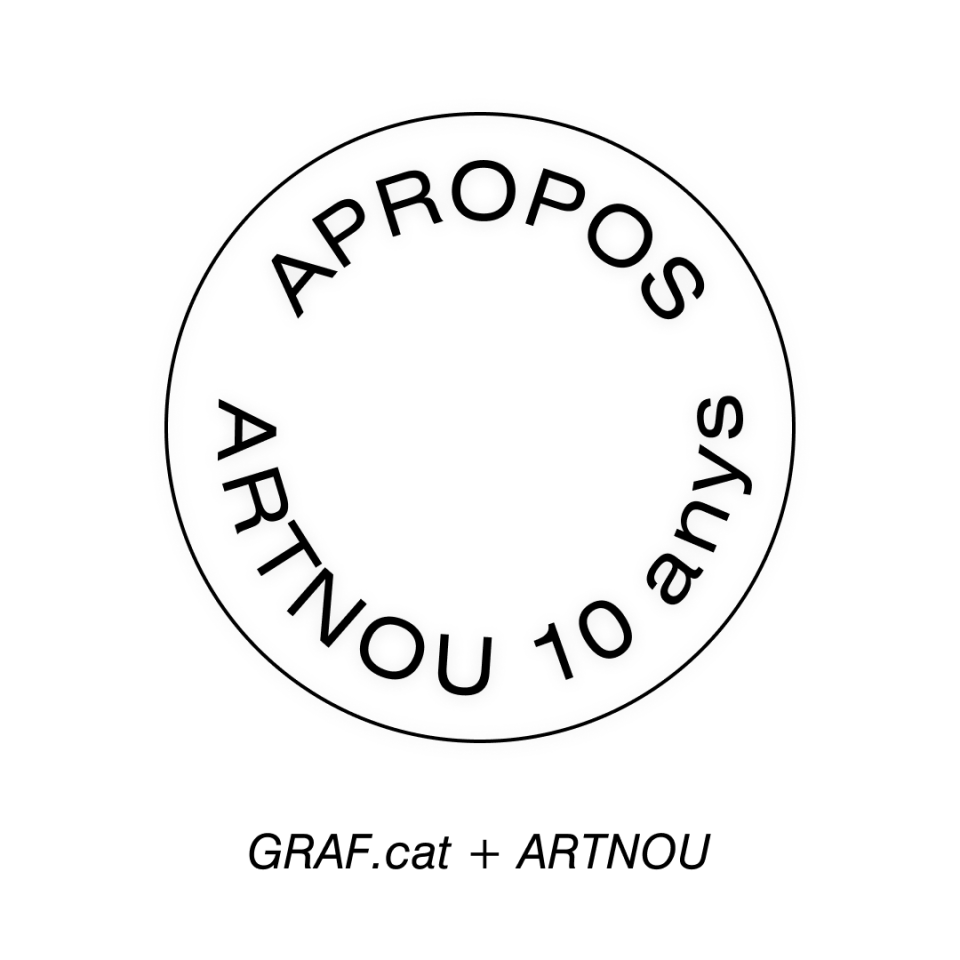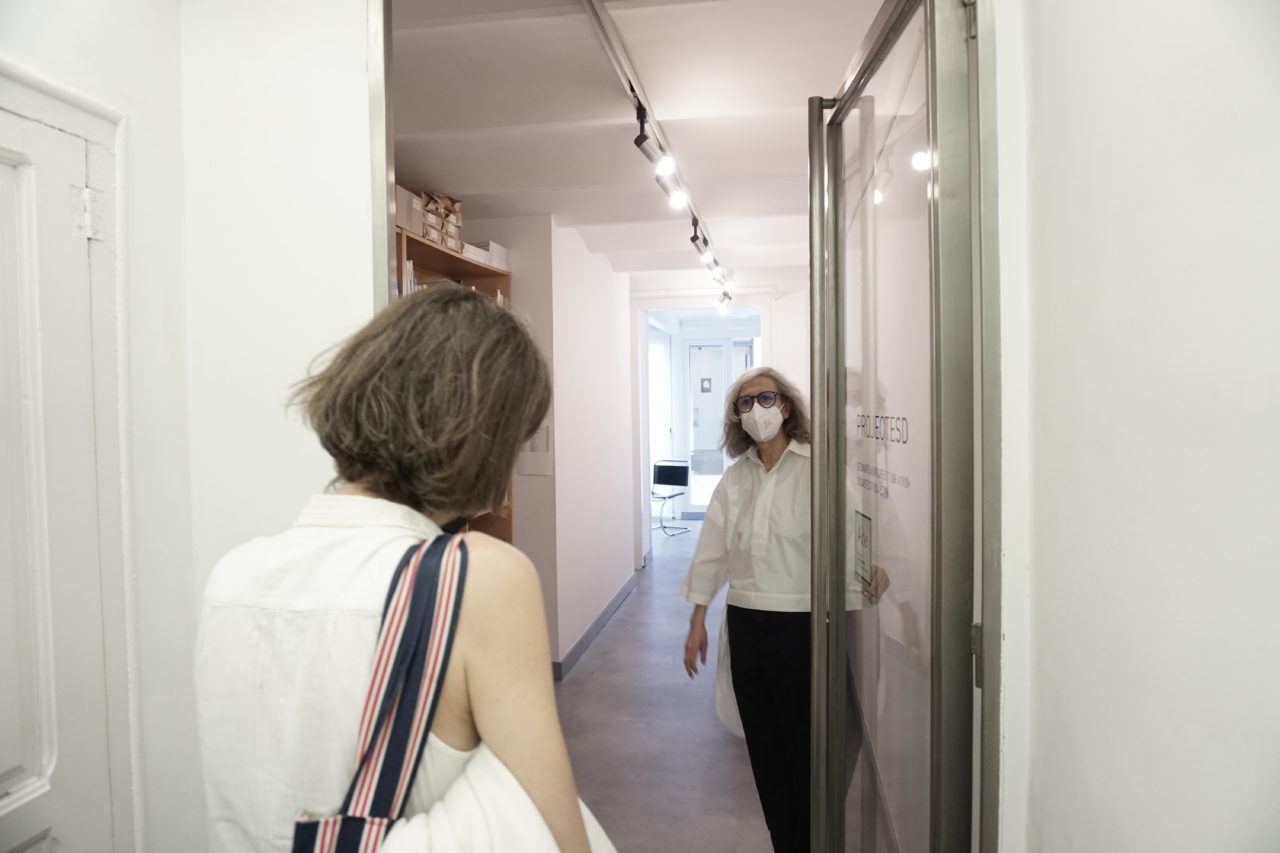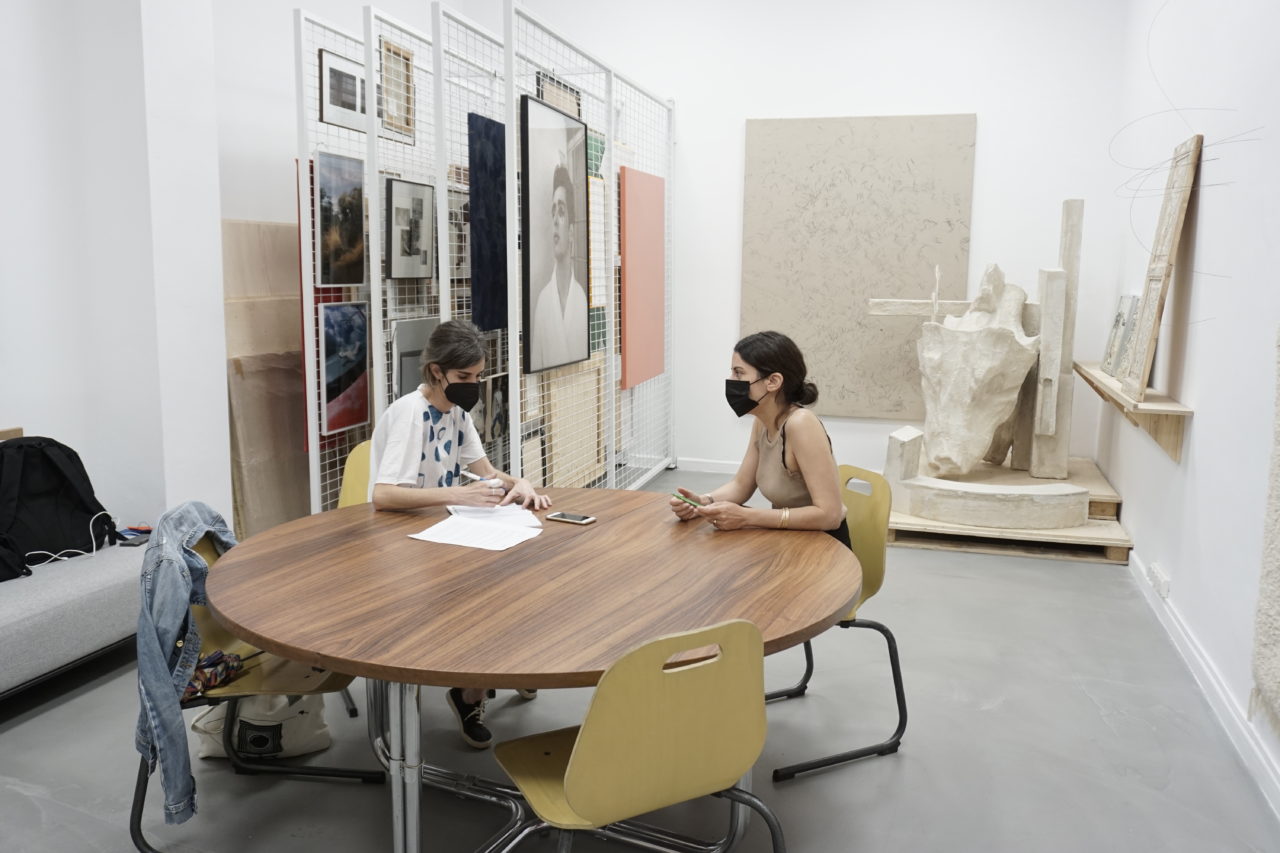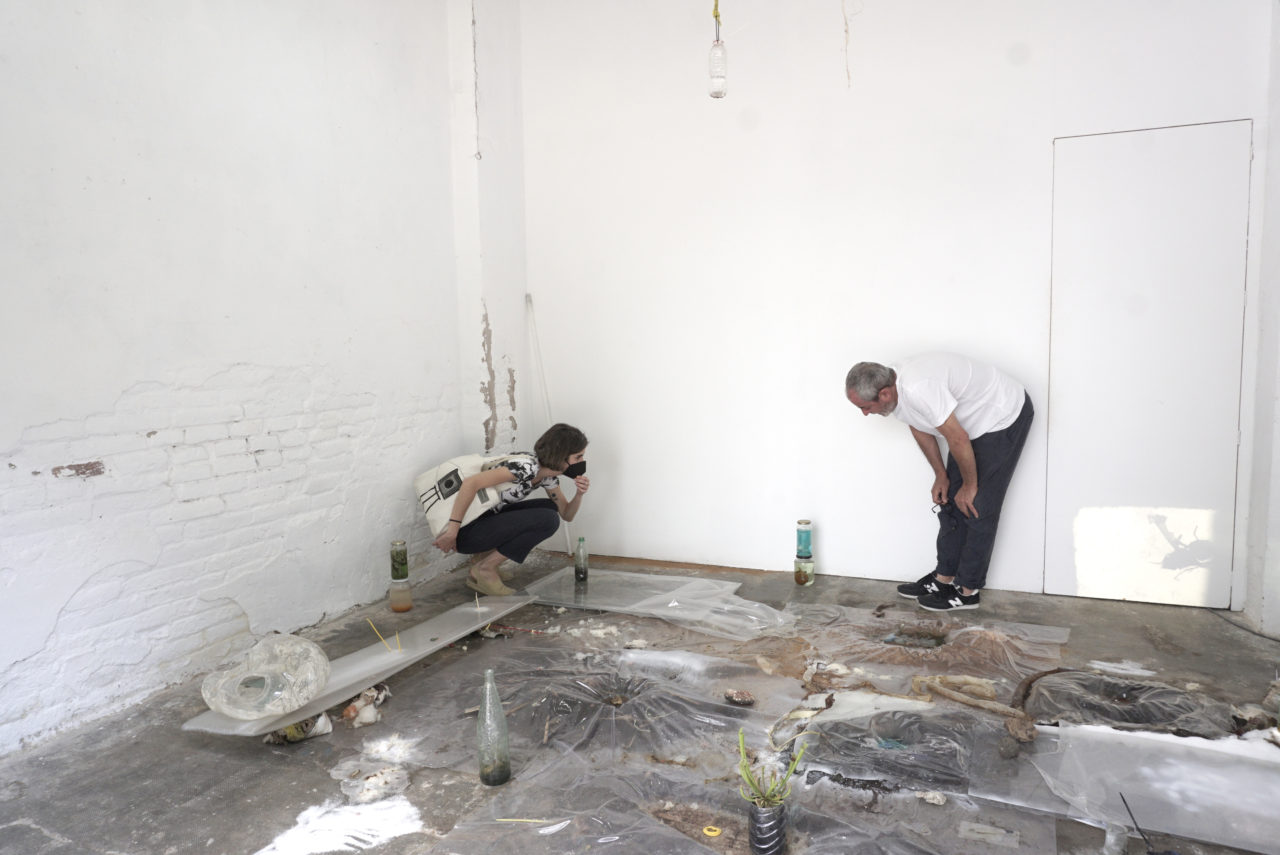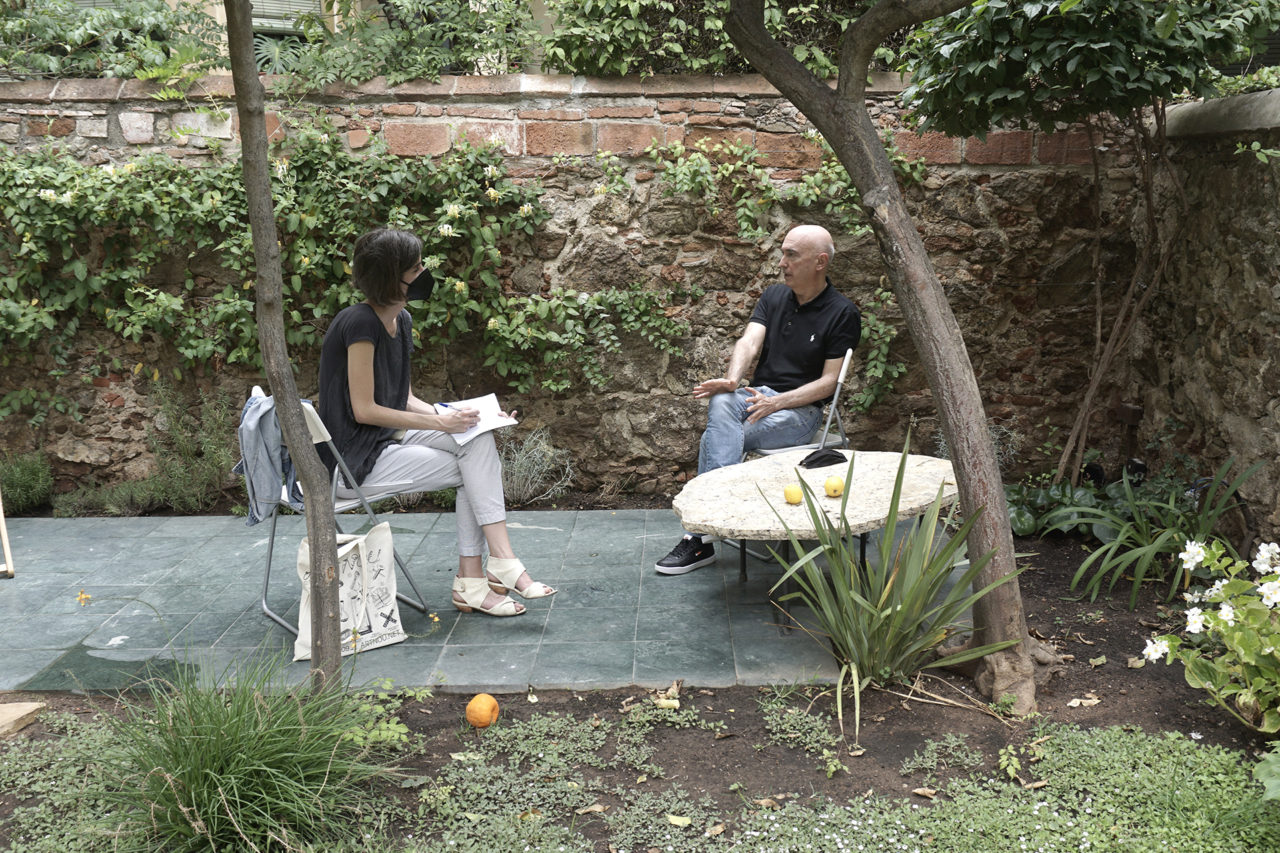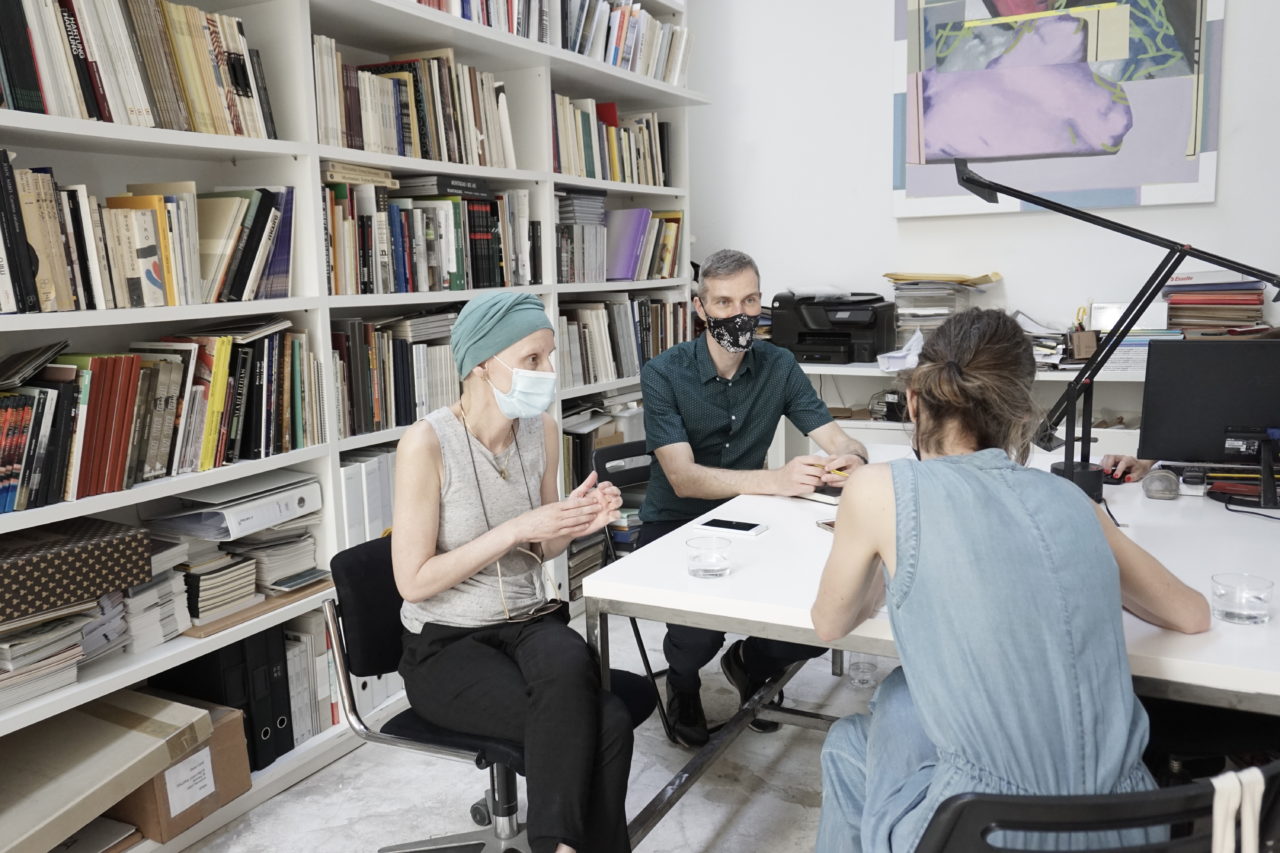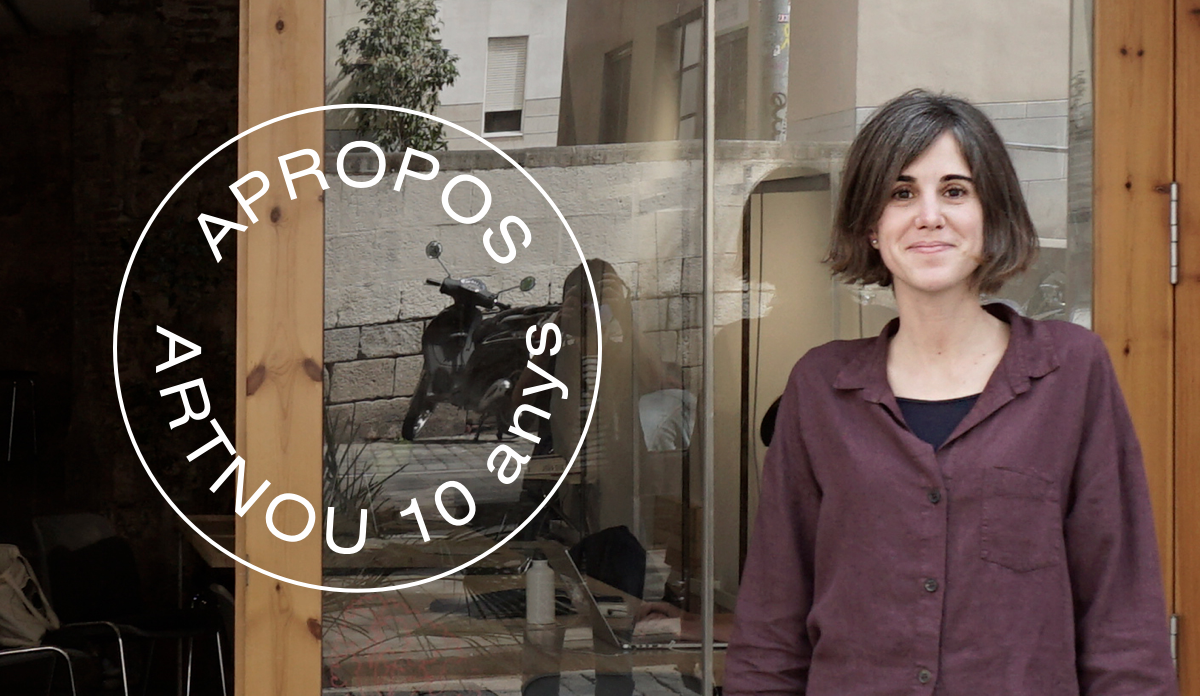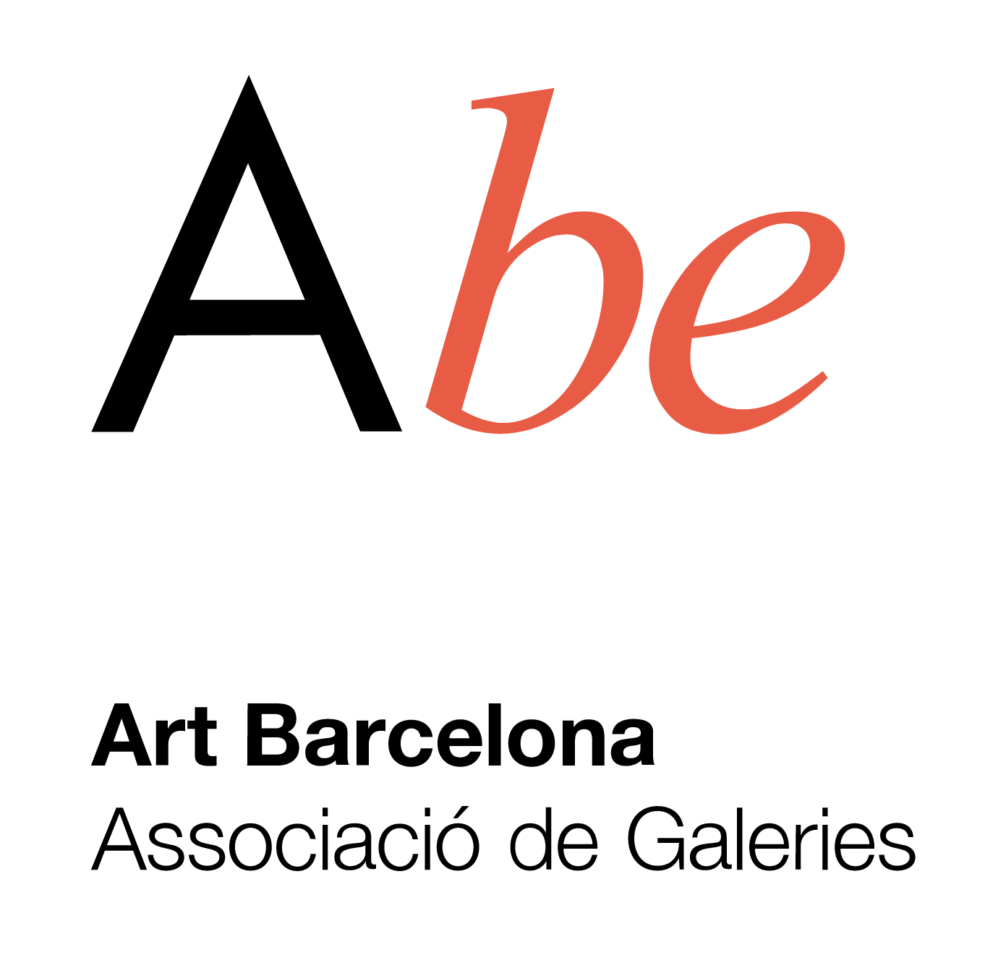info@graf.cat
‘Opportunity, youth, symbolic capital, visibility’ by Eugènia Sendra
Opportunity, youth, symbolic capital, visibility.
This ‘Apropos’ is the result of an encounter with five galleries participating in the tenth edition of Art Nou, the exhibition programme dedicated to young creators and emerging forms of making art. Silvia Dauder (ProjecteSD), Joana Roda (Bombon), Jorge Bravo (etHall), Joaquim Ruiz Millet (H₂O) and Patricia de Muga and Olivier Collet (Joan Prats) opened the doors of their spaces to talk about what surrounds this first encounter between gallery owner and artist, about the work of young artists -up to 35 years old, in the case of Art Nou- and about running in parallel with the spaces and the creators, with production and costs, with the prices of the works and the buyers, as well as other valuable things that happen around art.
La opportunity
Silvia Dauder is taking part in Art Nou for the second time. “When I make the programme for the year, I think about the calendar and Art Nou is like an insertion, it fits in where it can fit in, it has often coincided with Basel and that’s why I haven’t participated”, argues the gallerist. “It’s not that I don’t believe in Art Nou and it’s probably been thought that I’m against young art, but it’s not true”.
Her commitment to this year’s edition of Art Nou is literal: “I’m making an effort to exhibit a figure who is a very young artist”, she says in reference to Helena Civit Kopeinig. The artist’s installation presides over the entrance to the gallery -it coexists with the large exhibition in the main space- and revolves around a table where she has displayed her organic materials and pieces. The production cost has been minimal, despite the intrinsic work that an exhibition always requires, and the price of the pieces (ranging from 200 to 800, and 2,400 euros for the entire installation) is in keeping with the artist’s trajectory.
Dauder has eighteen years of experience as a gallery owner, he began working with a very young Iñaki Bonillas and exhibited him in a group show when the artist was twenty years old. In 2019 he made his debut at Art Nou with Lara Fluxà, with whom he has kept in touch and taken to fairs, despite not being an artist of the gallery. Dauder has focused on Civit because of her profound way of doing things, and her mission is to put her in contact with agents who work with young artists. At the same time, the gallerist warns that “it can be detrimental to introduce an artist who is still green into a multitudinous gallery space because you predispose him or her to believe that what he or she is doing is right”.
The best thing about Art Nou, according to Dauder, is the opportunity to work with new artists, regardless of whether the relationship can continue or not. “You’ve worked with the artist outside her studio, and you see the way she works, how she moves, whether she communicates well or not. You see things you wouldn’t see if you didn’t have the opportunity to make a small exhibition,” says Dauder. When it comes to signing up creative people, “you have to see what the artist can contribute, and what you can contribute to them”.
The youth
Bombon is the youngest gallery of them all and gallerist Joana Roda identifies very much with the Art Nou universe. “I’m 33 years old and I work with artists of my age, and we will probably grow in parallel”. And the same goes for Margot Cuevas, Bombon member and curator of the Daniel Moreno Roldán exhibition.
Roda reflects that they don’t make too much difference between the regular exhibitions and the Art Nou exhibition, like the ones they did with Aldo Urbano and Anna Dot (awarded in 2018). “What changes is, it’s the first Dani’s solo exhibition, and facing the space, with all the exposure you get, it’s a challenge”, he adds. On this occasion the space has been filled with apparently obsolete technology that works again to emit a nostalgic radio frequency. Although Roda points out that it could be an easy exhibition to sell (the entire installation is worth 7,500 euros), he also indicates that it works more as a first contact between the artist and possible buyers.
Bombon doesn’t dedicate a lot of resources to production (they have done Art Nou exhibitions with investments of 20 euros and up to 500 euros), but they do provide facilities for the artists they work with and offer support, visibility and involvement, invaluable intangibles. As a small gallery, they can’t and don’t want to represent more artists than they can take care of. It’s more complex than exhibiting and selling,” Roda explains. The work of moving artists doesn’t end when the exhibition is over, and even if it doesn’t sell, other interesting things can happen”.
The gallerist also talks about the importance and relativity of sales and asks for the existence of collectors betting almost exclusively on young art. “If they like the piece they might buy, but perhaps they don’t have this kind of feeling of responsibility towards younger artists. I didn’t see them, or I didn’t encounter them, and I’d love to meet them.”
In reference to young artists’ aspirations to establish themselves quickly with a gallery, Roda believes that “the gallery doesn’t have to be the mecca, it doesn’t mean everything works, or that you start selling. We are just one more tool, like curators, like museums”.
Symbolic capital
From etHall, Jorge Bravo is also very clear: he doesn’t consider whether the artists he works with are over or under 35 years old. However, the Art Nou exhibition doesn’t take place in the main room because it requires more production effort and a longer exhibition duration, “and perhaps it’s a challenge beside the point” for artists who are just starting out, argues the gallery owner.
The 17m2 room gives him a similar freedom to the one he had in the Raval, where he started in 2011, and it is here that artist Duncan Gibs has cooked up his live experiments. “You know that with Art Nou you’ll have more visibility than in a normal exhibition and I take advantage of it to show the work of someone I’m interested in… That’s the thing about art, it takes you to places you haven’t been”.
When it comes working with artists, different factors come into play: Bravo refers to the interest in their work, the possibility of doing specific projects, and good communication. “You have to see how you work, if there is empathy, because your own project is a very personal thing”. The gallerist keeps track of the artist’s developments after collaborating, as he believes it’s important that the artist moves, knocks on doors, grows on his or her own. Investments in production are small (500 to 1500 euros), and the gallerist evokes, once again, what is not seen. “Artists know what kind of gallery I am: it’s all fucking symbolic capital. Mine, because I don’t make any money, and theirs, for what they’ll get even without selling”. He has sold work in Art Nou, with prices of between 300 and 3000 euros, but he recognises that the Gibs project is not very saleable because of its “degenerative idiosyncrasy”. “We haven’t even talked about the price; I think the artist is looking for opportunities to develop his work rather than a direct relationship with the market”.
Bravo believes that, despite the fact that prices may be more affordable, there is no collective (and generationally young) interest in young art beyond that which may exist in some collecting circles. He speaks of a “cultural problem” and adds that “buying art is not just hanging a painting in the house, it is contributing to creating a fabric, to raising the general cultural level of the population, it is education, it is everything”.
Visibility
The gallerist Joaquim Ruiz Millet points out the reasons why H2O has participated in six editions of Art Nou: “It is a joint initiative and for us it has value. For the authors, we believe it’s a platform to give them certain visibility they wouldn’t have on their own, just with the gallery, and at the same time it’s a way of encouraging the public’s curiosity to discover young authors”.
This time they present the artist Carlos Herraiz, who carries out a pictorial and chromatic experimentation in different formats. The dynamics of the exhibition doesn’t vary from other displays, as the gallery works with young artists beyond the Art Nou programme, but it does broaden the dissemination “and the possibility of things happening, probably new projects rather than sales”, reflects the gallery owner.
The Gracia’s gallery is committed to a fairly uniform price range and seeks to be affordable (from 300 euros and up to 3000), but Ruiz Millet says that “prices are adjusted downwards to help a potential market have easier access”, in the case of younger artists and in accordance with their trajectory.
H₂O cannot take on productions, neither can establish commitments with all the artists who exhibit. “We maintain an open path of good relations: when the artist’s needs fit into what he knows he will find in the gallery, the paths meet again,” Ruiz Millet explains. The exhaustive link with the gallery may happen in some cases, but if a creator doesn’t find market, what can you do? We have a capacity and we can’t limit the author”.
Daring
Joan Prats, the most veteran gallery, presents the work of Julia Varela in the local context. “The artist has received grants and has had some institutional exhibitions, but she hadn’t had the chance to place her pieces on the market”, explain Patricia de Muga and Olivier Collet.
For them, Art Nou represents “a valuable opportunity for the artist but also for the gallery to make fresher and more daring proposals without the pressure of having to have a subsequent relationship with the artist”, says the gallery owner. Sometimes the relationship is consolidated, as has happened with Alicia Kopf, but it takes time, a time in which the gallery’s support and advice is maintained.
The investment in production is small and has to do with logistic, transport and materials issues, and above all, the works previously produced by the artists are exhibited. “We offer support, since for many of the artists this is their first solo exhibition in a gallery. You bring your day-to-day work and for them it’s a lot of novelty”, Collet replies. De Muga also points out what young creators bring: enthusiasm.
Within the framework of Art Nou they have sold pieces by Kopf, Pablo del Pozo and Marcel Rubio Juliana, but De Muga and Collet reflect the strongest Art Nou’s point is not the commercial side. In the case of Varela’s project, the price is higher because of the artist’s trajectory and because they are complex installations.
They are grateful to collectors approaching and giving confidence to gallery owners who discover young creators, despite the fact that “there are very few of them”, and they reflect on the tasks pending: “we have the job of reaching the younger public and convincing them that it is an opportunity to collect works by very young artists”.
Text by Eugènia Sendra in collaboration with GRAF. Eugènia is an editor and cultural communicator.
APROPOS are contents made about something that happens in our artistic context. In this case, for the celebration of Art Nou’s tenth anniversary, we dive into the interiors of five of the galleries that are part of Art Barcelona, and that have participated in this edition of Art Nou. Graf has set the stage and the questions, encounters and text are by Eugènia Sendra.
–
In collaboration with :




